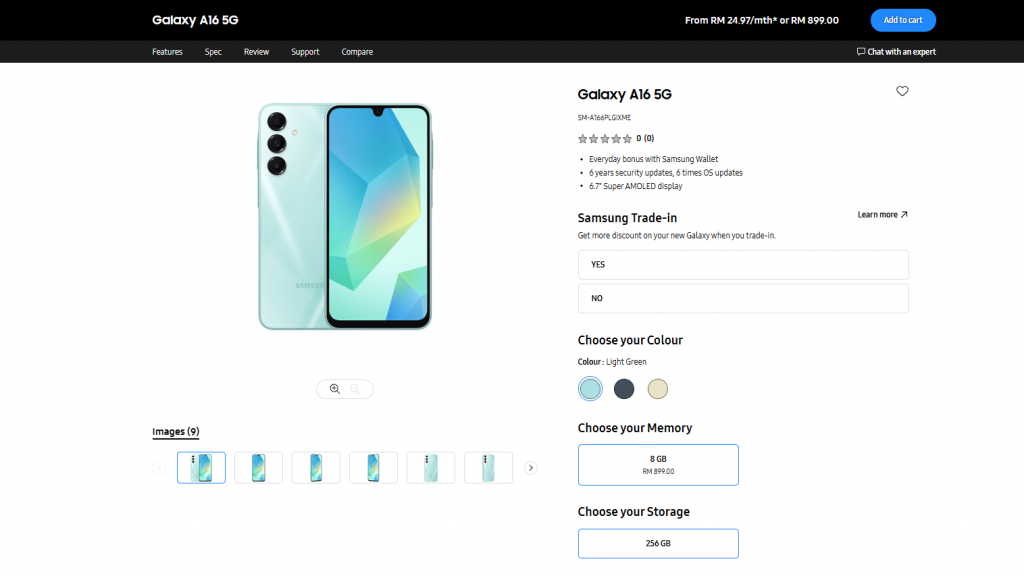OnePlus and Xiaomi have some truly compelling smartphones out in the market now. Their best smartphones are both very compelling, but also very different. In this article, we’ll compare them, we’ll compare the OnePlus 12 vs Xiaomi 14 Ultra. Both phones come in global variants too, so getting them shouldn’t be much of a problem, at least in some markets. The Xiaomi 14 Ultra is considerably more expensive, though, so keep that in mind.
As per usual, we’ll first list their specifications, and will then move to compare them across a number of other categories. We’ll check out their designs, displays, performance, battery life, cameras, and audio performance. There is plenty to talk about here, needless to say, so let’s get to it, shall we?
Specs
OnePlus 12 vs Xiaomi 14 Ultra, respectively
– Screen size:
6.82-inch LTPO AMOLED display (curved, 120Hz LTPO, HDR10+, 4,500 nits)
6.73-inch LTPO AMOLED display (curved, adaptive 120Hz, 3,000 nits max brightness)
– Display resolution:
3168 x 1440
3200 x 1440
– SoC:
Qualcomm Snapdragon 8 Gen 3
Qualcomm Snapdragon 8 Gen 3
– RAM:
12GB/16GB (LPDDR5X)
16GB (LPDDR5X)
– Storage:
256GB/512GB (UFS 4.0)
512GB/1TB (UFS 4.0)
– Rear cameras:
50MP (f/1.6 aperture, 23mm lens, 1.12um pixel size, Dual Pixel PDAF, OIS), 48MP (ultrawide, 14mm lens, 114-degree FoV, f/2.2 aperture, 0.8um pixel size, PDAF), 64MP (periscope telephoto, 0.7um pixel size, OIS, PDAF, 3x optical zoom, 6x “in-sensor” zoom)
50MP (wide, f/1.6-f/4.0 variable aperture, OIS, multi-directional PDAF, 1.6um pixel size), 50MP (ultrawide, f/1.8 aperture, 122-degree FoV, 0.7um pixel size, dual pixel PDAF), 50MP (telephoto, f/1.8 aperture, 0.7um pixel size, dual pixel PDAF, OIS, 3.2x optical zoom), 50MP (periscope telephoto, f/2.5 aperture, 0.7um pixel size, dual pixel PDAF, OIS, 5x optical zoom)
– Front cameras:
32MP (f/2.4 aperture, 0.8um pixel size)
32MP (wide, f/2.0 aperture, 0.7um pixel size)
– Battery:
5,400mAh
5,000mAh
– Charging:
100W wired, 50W wireless, reverse wireless (charger included)
90W wired, 80W wireless,, 10W reverse wireless (charger included)
– Dimensions:
164.3 x 75.8 x 9.2mm
161.4 x 75.3 x 9.2mm
– Weight:
220 grams
224.4 grams
– Connectivity:
5G, LTE, NFC, Wi-Fi, USB Type-C, Bluetooth 5.4
– Security:
In-display fingerprint scanner (optical) & facial scanning
In-display fingerprint scanner (optical)
– OS:
Android 14 with OxygenOS 14
Android 14 with HyperOS
– Price:
$799.99+
€1,499
– Buy:
OnePlus 12 (Best Buy)
Xiaomi 14 Ultra (Amazon)
OnePlus 12 vs Xiaomi 14 Ultra: Design
From the front, the two phones do look somewhat similar, but that all disappears when you look at them from the back. They also have considerably different in-hand feel, so… there are plenty of differences. Both smartphones come with a frame made out of metal. The OnePlus 12 has a glass backplate, while the Xiaomi 14 Ultra has a vegan leather backplate (in both of its global versions).
The two phones have curved displays, and each has a centered display camera hole. The bezels are very thin on both devices. All the physical buttons sit on the right-hand side, while the OnePlus 12 also has an alert slider which is located on the left. If we flip them around, you’ll notice quite a few differences. The Xiaomi 14 Ultra has a centered camera oreo with four cameras. The OnePlus 12 also has a round camera oreo, but in the top-left corner, with three cameras. The one on the Xiaomi 14 Ultra definitely protrudes more, though.
The OnePlus 12 is a bit taller and a bit wider than the Xiaomi 14 Ultra, while the two phones have the same thickness. They are also almost identical in terms of weight. Do note that the Xiaomi 14 Ultra has both heavier and lighter models on offer, but only one variant is available globally, the one with a vegan leather backplate, A glass backplate model is available in China, and the same goes for a model with a titanium frame. There is a reason the OnePlus 12 is a bit larger, it has a bigger display.
Both smartphones come with a certification for water and dust resistance. The Xiaomi 14 Ultra is IP68 certified, while the OnePlus 12 is IP65 certified. So the Xiaomi 14 Ultra does have the edge in that regard. They both feel great in the hand, though completely different. The point is, they’re comfortable to use, and feel like premium devices. The OnePlus 12 is more slippery due to its glass backplate, though.
OnePlus 12 vs Xiaomi 14 Ultra: Display
There is a 6.82-inch QHD+ (3168 x 1440) LTPOA MOLED display included on the OnePlus 12. That panel is curved, and it has an adaptive refresh rate of up to 120Hz. Dolby Vision is supported, and the panel can also project HDR10+ content. The theoretical peak brightness of this display is 4,500 nits. The phone has a screen-to-body ratio of around 90%, while the Gorilla Glass Victus 2 protects this display.

The Xiaomi 14 Ultra, on the other hand, has a 6.73-inch QHD+ (3200 x 1440) LTPO AMOLED display. This panel is also curved, and it has an adaptive refresh rate of up to 120Hz. Dolby Vision is supported, as is HDR10+ content. The theoretical peak brightness of the display is 3,000 nits. The screen-to-body ratio is around 89%, and the display aspect ratio is 20:9. The Xiaomi Shield Glass protects this panel.
Both of these displays are outstanding. Choosing either one will make you happy, to be quite honest. Both are immensely sharp, vivid, and offer great viewing angles. Both of them also get immensely bright, so using them in direct sunlight is not a problem at all. They also have very good touch response too. Just do note that they’re both curved, just in case that’s not your thing. We don’t really have any complaints on either of these displays.
OnePlus 12 vs Xiaomi 14 Ultra: Performance
Qualcomm’s Snapdragon 8 Gen 3 processor fuels both of these smartphones. That is the most powerful processor Qualcomm has to offer at the moment. The OnePlus 12 comes in both 12GB and 16GB LPDDR5X RAM variants. The Xiaomi 14 Ultra is only available in a 16GB LPDDR5X RAM configuration. Both smartphones also offer UFS 4.0 flash storage, so they’re kind of on par in terms of performance-related specs.
Both of these devices offer outstanding performance, to say the least. They can handle anything you throw at them, ranging from simple multitasking to gaming. Launching apps is very fast on both, as is jumping between apps, consuming multimedia, browsing, taking pictures, processing images, and so on. They never seemed like they were struggling with anything. Their software offerings are considerably different, though, but they both come with Android 14 underneath their custom skins.
You can run pretty much any game on either one of these phones. They can even handle Genshin Impact without a problem. The OnePlus 12 does have a better cooling implementation, and that is noticeable, but neither phone got too hot during gaming or anything of the sort. Also, the performance did not suffer even after prolonged gaming sessions, at least for us. Both companies did a great job.
OnePlus 12 vs Xiaomi 14 Ultra: Battery
The OnePlus 12 has a 5,400mAh battery on the inside, while the Xiaomi 14 Ultra comes with a 5,000mAh battery pack. Its Chinese variant does include a larger battery, a 5,300mAh unit. We are focusing on the global variant, though, of course. The good news is that both smartphones offer great battery life. Both smartphones did great in our battery drain test, and they also proved worthy during regular testing.
Both of these smartphones were able to cross the 8-hour screen-on-time mark. That goes for days when we did not play any games, but we used them for plenty other things. Ranging from emails and web browsing to taking pictures and multimedia consumption. Do note that we did get slightly better battery life on the OnePlus 12, though. That phone even managed to cross the 9-hour screen-on-time mark. Your mileage may vary, however, of course, as you’ll be using your phone differently with different signal strengths, and so on.
When it comes to charging, both smartphones have plenty to offer. The OnePlus 12 supports 100W wired (80W in the US), 50W wireless, and 10W reverse wireless charging. The Xiaomi 14 Ultra supports 90W wired, 80W wireless, and 10W reverse wireless charging. You’ll also be glad to know that both smartphones do include a charger in the box. So you’ll get blazing charging regardless of which phone you get.
OnePlus 12 vs Xiaomi 14 Ultra: Cameras
The OnePlus 12 is equipped with three cameras. The main one is a 50-megapixel unit, while there’s also a 48-megapixel ultrawide camera (114-degree FoV) in use here. The third camera on the back is a 64-megapixel periscope telephoto unit (3x optical zoom). When it comes to the Xiaomi 14 Ultra, there are four 50-megapixel cameras used. A 50-megapixel main unit has a variable aperture. A 50-megapixel ultrawide camera offers a 122-degree FoV. There is also a 50-megapixel telephoto camera (3.2x optical zoom), and a 50-megapixel periscope telephoto unit (5x optical zoom).


It is worth noting that the OnePlus 12’s cameras are backed by Hasselblad. The ones on the Xiaomi 14 Ultra come with Leica’s lenses and expertise. Both of these smartphones have a lot to offer in the camera department, though it’s worth saying that the Xiaomi 14 Ultra is a bit more versatile thanks to that telephoto camera. The images they provide are excellent. The OnePlus 12 prefers a bit more contrasty shots, while the Xiaomi 14 Ultra aims for realistic pictures. They do a fantastic job in both day and night, to be honest.
The images turn up sharp, detailed, and vivid. The HDR shots are excellent, and both smartphones also handle noise in low light like champs. If we had to choose one of the two, we’d probably go for the Xiaomi 14 Ultra, but both smartphones are truly outstanding when it comes to photography. Even the video content that comes out of them is praise-worthy.
Audio
Both the OnePlus 12 and Xiaomi 14 Ultra include stereo speakers. Speakers on both smartphones are good, and they’re loud enough. The ones on the Xiaomi 14 Ultra are a bit louder, though. Both sets are well-balanced.
If you were hoping to get an audio jack on either of these two phones, well, that’s not the case. You can utilize their Type-C ports for wired audio connections, though. Both phones also support Bluetooth 5.4.



